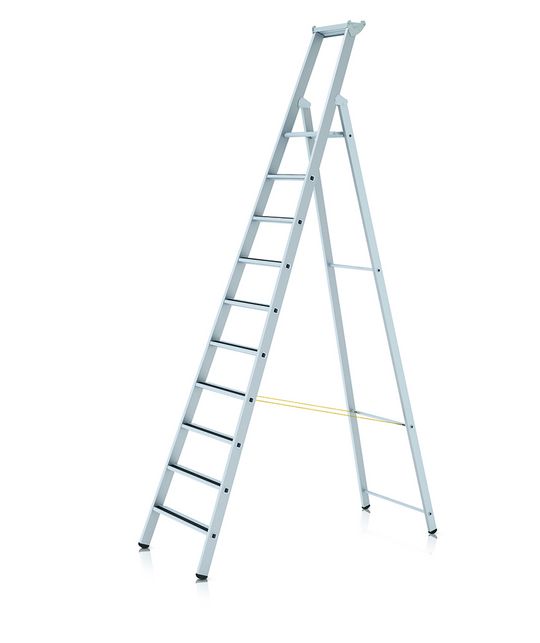Check equipment
Firstly, it is important to ensure that you have both the necessary equipment, and that it is in good condition before starting any work at height. It is recommended that ladders are subject to a pre-use check, as well as more detailed inspection at least once every three months.
In order to ensure equipment is safe, companies should ask their safety officer to perform a risk assessment as soon as possible. Effective safety management requires an individual risk assessment to take into account various factors before carrying out a task involving ladders. These factors include the purpose of use and duration of the activity.
For example, it makes a difference whether the task involves quickly replacing a light bulb compared to standing at great heights for hours while carrying out extensive work. If the task requires great dexterity or strength, it may make sense to use a scaffold or a platform ladder instead of a conventional ladder. Ease of setting-up and dismantling should also be considered, alongside looking for a low weight and transportable solution.
Out with the old
As of the 1st January 2018, the European Committee for Standardisation published new standards, EN 131-1 and 2. The new standard includes a “Professional” and “Non-Professional” category. In the UK, the current standard BS 2027 Class 1 (ladders for heavy duty and industrial use) has been withdrawn and replaced with the EN 131 Professional rating. Under the new standard, all leaning ladders that are three metres or longer must be equipped with a stabiliser bar at the base to ensure stability. These standards have been brought in with the intention of reducing ladder-related incidents.
EN 131-1 and 2 does not prohibit the continued use of current ladders. However, as ladders are ubiquitous within industrial and trade skills, it is essential that they are reviewed regularly to ensure they are still functioning safely.
Ultimately, EN 131-1 and 2 are intended to improve safety, so no compromises should be made when people’s lives are at stake. Companies should always prioritise a safer working environment for staff. A small investment now in the latest safety standards may save far greater costs long-term should an accident happen.
Use the right tool for the job
A quality ladder is characterised most importantly by its durability. This concerns both the design and material. For example, ladders should be built of material that can be used in workshops that might use corrosive chemicals in production, and be durable so that they can perform safely in all weather conditions for work outdoors.
Environmental influences such as ice, snow and mud should also be taken into account as they might strongly impair a ladder's slip resistance. Even in covered indoor areas, machine oil, water or other material can quickly lead to dangerous and slippery conditions. This is especially true when working on, or in the immediate vicinity of, equipment such as milling and drilling machines, where oil is used as a coolant – the risk of an accident can be mitigated with a ladder that is specially designed for the situation, such as the ZARGES R13 ladder.
To help ensure companies are doing everything possible to reduce the risks of working at height, ZARGES has put together the following tips:
- Regularly inspect ladders: it is recommended that ladders are subject to a pre-use check, as well as detailed inspection at least once every three months
- Take note of the inspector's qualification: An inspection is considered legally compliant only when it is performed by a certified in-house safety officer or a trained employee of a specialist company
- Perform retrofitting: Access systems can be retrofitted to comply with regulations. For example, a stabiliser base can be added to a leaning ladder in accordance with EN 131-1
- Safety first: In addition to annual inspections, companies should always keep an eye on the safety of their ladders and access systems. Specialist companies and manufacturers, such as ZARGES, offer relevant advice, instructions and information to ensure ladders are being used safely in the work environment
Tel: +44 1908 641118
Email: sales@zarges.co.uk
Visit: https://www.zarges.com/uk

